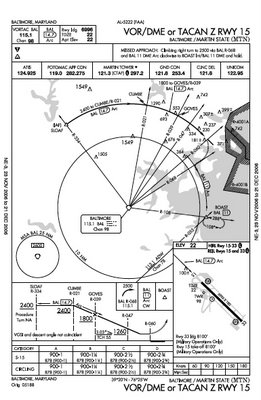If you are a GA pilot trying to stay sharp, a PC-based simulator won't have most of the gee-whiz stuff that Level D sims have. And it doesn't have to. Taken with the proper attitude, Flight Simulator, X-Plane, or any basic flight simulator can help you get sharp and stay sharp. Even with just a basic control yoke, such as the one offered by CH Products, the benefits of simulator practice increase dramatically. If you want to invest in rudder pedals, too, that's up to you. Some might argue that a decent simulator setup could end up costing well over $1000. This is true, but with the cost of 100LL over $4 per gallon you should make that investment back pretty quickly. And it doesn't really matter if the time you spend on the simulator can be logged. The real benefit is increased safety and proficiency when you get in a real aircraft.
After you have assembled you flight simulator, have it set-up, debugged it, and it is running reasonably well, you're ready to start putting it to good use. I define good use as practicing departure and approach procedures in an aircraft similar to what you'd fly in real life. Practicing hand-flying an ILS with the A320 flight model that you just downloaded may be a hoot, but it is probably not going to help you fly an ILS in a Seneca in real life. To borrow an adage often repeated by many musicians: "If you play when you practice, you'll find yourself practicing when you play."
All of the simulations of ATC interactions that I've seen ... SUCK. There, I've said it. Simulating all the possible interactions with ATC is a tall order, but the simulations I've seen don't even handle the routine radio interactions very well. Since I use my simulator to practice procedures, I don't waste my time with simulated ATC. If you have a good instructor who knows the ATC patter well, that is worth more than any ATC simulation. And I don't fiddle with having other simulated aircraft flying around me. And since I'm using the simulator to practice procedures, I will go through the motions of getting me clearance, reading it back, and configuring the radios and the aircraft just like I would in real life.
Years ago I was a beta tester for a now-defunct flight simulator that had some navigation database issues. Most of the VORs were there, but some NDBs, DME stations, and marker beacons were missing. I resigned myself to the fact that the only way to test this stuff for my area was to fly each and every approach. So that's what I did. Not all at once, mind you, but about 10 to 12 approaches per day. In a couple of weeks, I had gone through all of the approaches for California. And learned a ton in the process. I still have a book of approaches next to my simulator and every few days I sit down and sight read a new approach, departure or arrival. With the NACO web site, you can access a huge number of procedures for free.

So when Annonymous pointed me to the Martin State VOR/DME RWY 15 approach, I couldn't wait to find some spare time to fly it. This a fun approach to practice because you get two DME arcs (one on the intermediate/final approach course and one on the missed approach). I'd like to try the NDB approaches that Aviatrix suggested, but my Elite simulator doesn't have terrain or navigation databases for areas outside the U.S. I'd like to run X-Plane, but it doesn't interface with the Elite hardware that I have. Which simulator and what hardware to use is a whole 'nother topic.
An effective technique I've found for working my way through a book of approaches is to start by flying an airport's departure procedure, then navigate my way to an initial approach fix for an approach back into the airport. If the current, real-world weather for that airport looks challenging, I'll import that weather and use it. Otherwise, I'll set up some challenging, but not insurmountable ceiling, visibility, wind and turbulence conditions. And if I'm feeling particularly cocky, I'll set up one or more random system or engine failures to occur when I least expect it.
So if you want to be able to get good at setting up for and flying instrument procedures without breaking the bank, grab a book of approach plates and fire up your simulator. It's go time!











